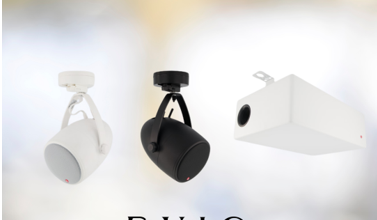Safeguarding Your Digital Assets: The Role of Managed Detection and Response in Cybersecurity

Table of Contents:
- Introduction to Cybersecurity Challenges
- Understanding Managed Detection and Response
- Key Benefits of Implementing MDR
- The Limitations of Traditional Security Measures
- Integrating MDR with Existing Systems
- Real-World Examples of MDR Success
- What to Look for in an MDR Provider
- The Future of Cybersecurity: Evolving Threats and Solutions
Introduction to Cybersecurity Challenges
Businesses are becoming more susceptible to cyber threats in the rapidly evolving digital landscape. The number and sophistication of cyber-attacks are rising, which is alarming for organizations that might need to be adequately prepared. According to the Cybersecurity Ventures report, cybercrime damages are predicted to hit $10.5 trillion annually by 2025, up from $3 trillion in 2015. This statistic starkly highlights the urgent need for robust cybersecurity measures. Businesses need to protect not just their assets but also the sensitive data of their stakeholders.
One advanced solution increasingly adopted is Managed Detection and Response (MDR). This round-the-clock defense ensures businesses respond rapidly and effectively, lessening potential downtime and losses associated with cyber attacks.
Understanding Managed Detection and Response
Managed Detection and Response is a comprehensive service that provides organizations with detection and response capabilities. It goes beyond traditional security measures, utilizing cutting-edge technology and expert analysis to capture and neutralize threats. At its core, MDR services offer continuous monitoring performed by sophisticated tools and seasoned security analysts. This proactive approach enables the early identification of threats, allowing for significant immediate action and reducing the probability of a security incident becoming a disaster. As the technology focusing on MDR emphasizes proactive threat management, it offers an essential service in detecting and responding to threats in real-time before they cause significant damage.
What separates MDR from traditional approaches is its reliance on multiple layers of defense. By combining machine learning, behavioral analytics, and expert threat intelligence, MDR covers a vast spectrum of potential threats. This ensures that organizations are alerted to threats and receive detailed insights and responses designed to address those threats most effectively.
Key Benefits of Implementing MDR
One of MDR’s primary benefits is its ability to provide proactive threat detection. Continuous systems monitoring can identify and mitigate threats before causing harm. Modern enterprises rely on this real-time surveillance for peace of mind and operational continuity. After implementing MDR solutions, many organizations report smoother operations and higher confidence in their cybersecurity policies.
SC Magazine’s detailed analysis indicates that MDR services have become synonymous with an increased security posture. Businesses harness MDR to bolster defenses against sophisticated cyber attacks by deploying advanced strategies and monitoring protocols. Moreover, reduced response times to potential breaches drastically minimize exposure and associated recovery costs.
The Limitations of Traditional Security Measures
Traditional security measures often rely on static security models that react to threats after they have occurred. While these models may have been adequate in the past, today’s complex cyber threat landscape demands agility and adaptability—qualities often absent in older frameworks. The reactive nature of traditional security means that systems are vulnerable to zero-day exploits and other emerging threats they aren’t equipped to recognize beforehand.
Relying solely on traditional models can result in longer detection times for breaches, escalating the severity of a security incident. Moreover, these systems often operate as silos, lacking the synergy needed for comprehensive threat analysis and understanding. This disjointedness can lead to critical gaps in defense, which cyber attackers can easily exploit, resulting in potentially devastating consequences for the affected businesses.
Integrating MDR with Existing Systems
Integrating MDR with an organization’s current systems is a strategic step in enhancing overall cybersecurity. For organizations considering this addition, the integration process should begin with a comprehensive assessment of existing security frameworks. This assessment will identify potential gaps and vulnerabilities that MDR services can address.
The next critical step involves selecting an MDR provider whose services align with the organization’s specific needs and security objectives. An efficient integration entails ensuring that the MDR solutions complement and bolster existing cybersecurity tools rather than replacing them. Training staff to work coherently with these new systems is vital, enabling better coordination and maximization of the MDR’s capabilities for early detection of threats.
Real-World Examples of MDR Success
Real-world scenarios offer compelling evidence of the efficacy of MDR solutions. Take, for example, a technology company inundated with phishing attacks that were quickly overwhelming its internal IT resources. After adopting an MDR service, the company experienced a transformative change. With continuous monitoring and expert analyses, threats were intercepted at initial stages, resulting in an 80% reduction in successful attacks.
Read also: Lakhbir Singh Lakha Net Worth in Rupees: His Wealth
Another notable case involves a financial services firm implementing MDR after suffering a data breach exploiting delayed threat detection. Post-MDR integration, the firm reported drastically improved detection capabilities, which allowed them to tackle threats head-on. These instances vividly illustrate how implementing an MDR solution can significantly improve threat management and organizational security health.
What to Look for in an MDR Provider
Choosing an MDR provider requires thorough consideration of several factors. Service offerings should encompass comprehensive threat detection and response options tailored to a business’s unique needs. It’s crucial to evaluate the provider’s industry experience and assess their track record of success through case studies and testimonials from existing clients.
Reputation is an essential aspect to consider. A provider with a strong reputation for delivering consistent, high-quality services is typically more reliable. Furthermore, the provider’s technologies should be cutting-edge, ensuring the services can deal with emerging threats. Finally, an MDR provider that takes a partnership approach, working closely with your internal team, adds significant value, helping to align strategies and ensure seamless operations.
The Future of Cybersecurity: Evolving Threats and Solutions
The future of cybersecurity is expected to be characterized by both evolving threats and innovative solutions. As cybercriminals become more sophisticated, cybersecurity solutions like MDR must evolve. We anticipate a stronger integration of AI and machine learning into MDR services, enabling predictive analysis and allowing for enhanced threat detection and response at unprecedented speeds.
According to CSO Online, businesses must prepare for the increasing complexities of cyber threats in the future. Future-ready MDR solutions must be adaptable, flexible, and intelligent to maintain an edge over cyber adversaries. Continuously evolving cybersecurity strategies will be essential for organizations aiming to protect their digital assets in the unpredictable cyber threat landscape.
In summary, MDR represents a crucial line of defense in the modern threat landscape. Businesses can secure their futures against evolving cyber threats by enhancing threat detection and fast response capabilities. Comprehensive adoption of MDR is a proactive step in safeguarding organizational integrity, allowing business operations to proceed unimpeded by the threats looming large in the digital age.




